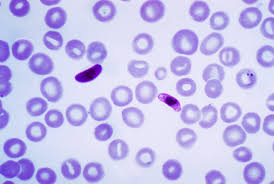plasmodium
英 [plæz'məʊdɪəm]
美 [plæz'moʊdɪrm]
- n. [无脊椎] 疟原虫;变形体;原形体;多核的原形质块

英语词源
- plasmodium (n.)
- 1871, Modern Latin, coined 1863 in Germany from plasma + -odium, from Greek -odes "like" (see -oid).
权威例句
- 1. Finding a vaccine for Plasmodium has been an elusive goal.
- 寻找防治疟原虫的疫苗,一直是个难于达到的目标.
- 2. More than 50 species of this plasmodium attack animals.
- 有50多种这样的疟原虫侵害着动物.
- 3. It involves , in effect , immunizing mosquitoes against gametes, the sexual stage of Plasmodium.
- 它实际上是免疫蚊虫去抗击配子, 即疟原虫的有性阶段.
- 4. Plasmodium is a protozoan which causes malaria; it is the causative agent of the disease.
- 疟原虫是引起疟疾的原生动物; 是疾病的病原体.
- 5. Genomic analysis of parasitic human pathogens, particularly Plasmodium falciparum, and Leishmania major.
- 人类寄生性病原体的基因体分析, 特别是疟原虫与利什曼原虫.